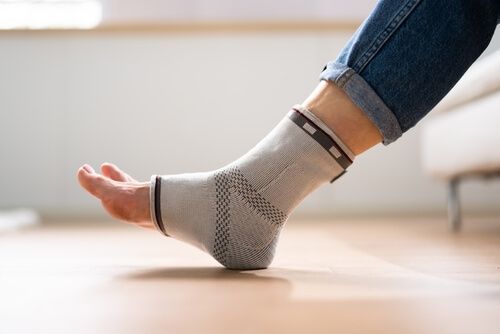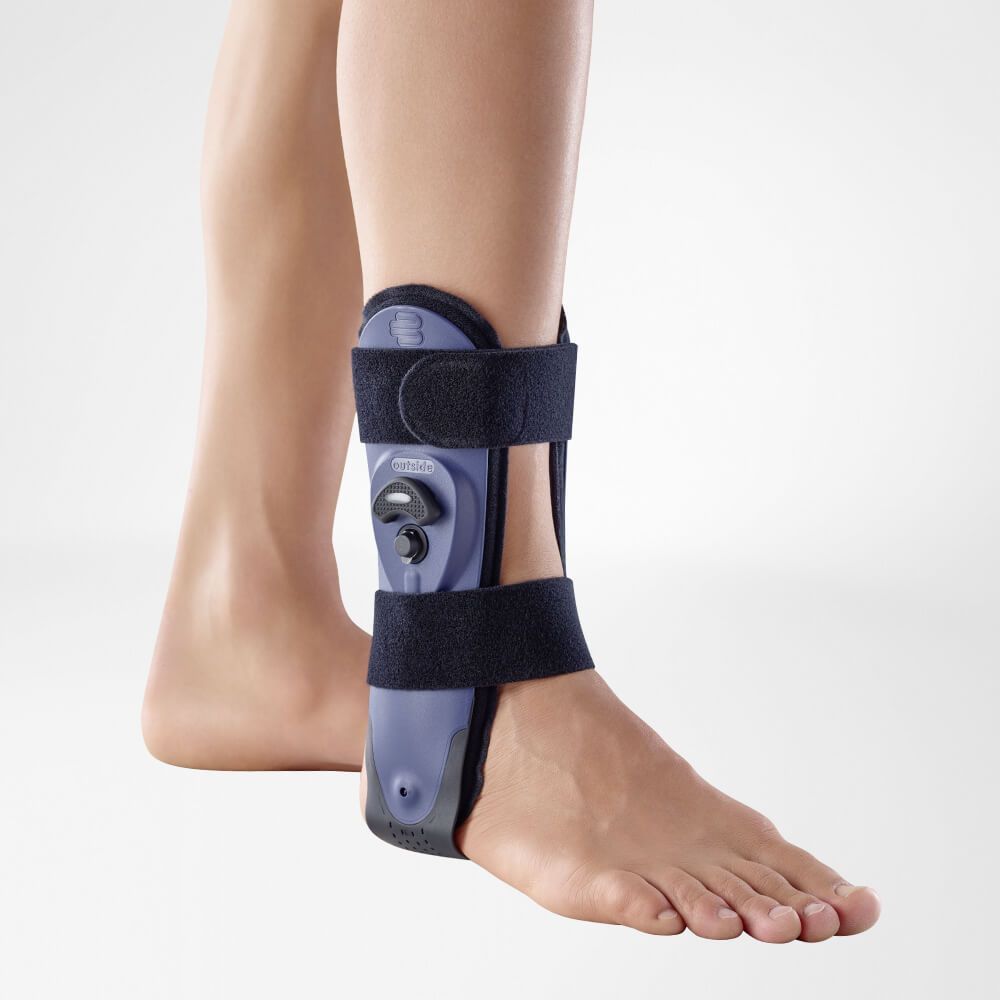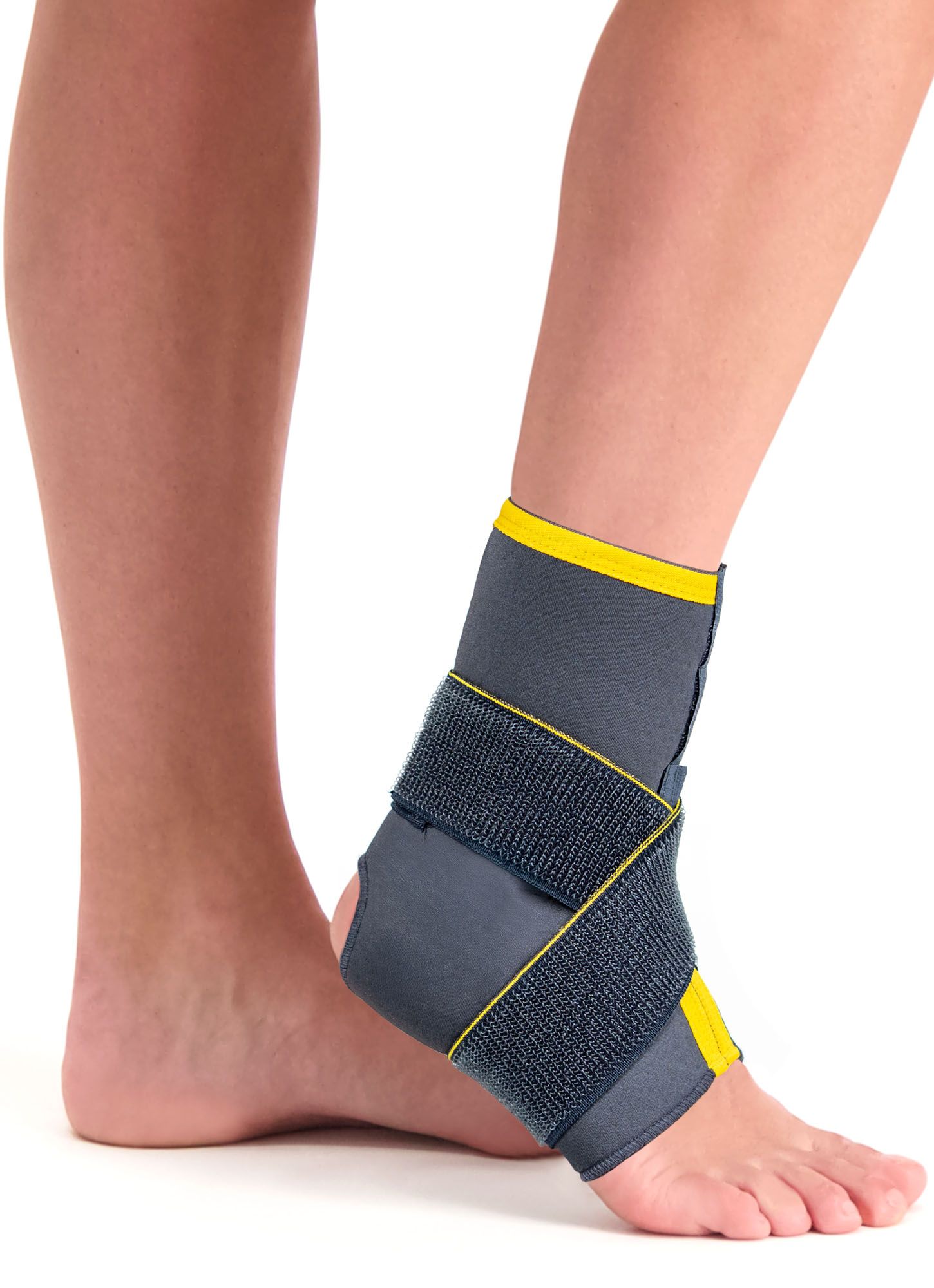Torn Ankle Ligaments
Suffering from a torn ankle ligament? This is often recognizable by swelling under and around the ankle, often accompanied by bruising. A torn ligament usually results from a wrong movement—such as twisting your ankle. Walking or running can become very painful. With the right diagnosis and support tools, the ankle ligaments can heal as quickly as possible. Read on to learn more about the symptoms and how to best treat the ankle.
What is a torn ankle ligament?
Tendinous ligaments run from the ankle bones to the heel bones. In the case of a torn ligament, the foot has twisted, causing these ligaments to tear. Usually, the ankle rolls inward, damaging the ligaments on the outside. Occasionally, the opposite occurs, though this is less common. This typically leads to swelling under and around the ankle, often accompanied by bruising.
What are the symptoms of a torn ankle ligament?
A completely torn ankle ligament usually doesn’t cause immediate pain. However, a partial tear can be very painful. Swelling typically develops under and on top of the ankle, and bruising may appear. This can be recognized by discoloration under the ankle, sometimes extending to the edge of the sole, which becomes visible 24 to 48 hours after the injury.

What causes a torn ankle ligament?
The most common cause is a misstep or fall. This can happen on uneven ground or on a sports field—for example, grassy areas or uneven pavement. It usually involves uncontrolled, unexpected movements. There are also some risk factors that increase the likelihood of tearing an ankle ligament:
- Poor muscle strength
- No proper warm-up before exercising
- Improper footwear
- A history of previous ankle injuries
Treatment for the fastest possible recovery
There are several steps you can take when dealing with a torn ankle ligament:
- Get as much rest as possible
- Apply ice to the ankle for about ten minutes (R.I.C.E method: Rest, Ice, Compression, Elevation)
- Use compression bandages or wear a brace for support
- Elevate the ankle to promote good circulation
Persistent pain after treatment
If you still experience pain after following these steps, it’s advisable to contact your doctor. In most cases, you’ll be treated with tape or a walking cast to promote healing. You are often referred directly to a physiotherapist and are usually symptom-free after six weeks. The physiotherapist will create a treatment plan with exercises to strengthen your muscles. When returning to sports, a brace is often used. In more severe cases, surgery may be required to repair the torn ligaments. The ligaments are then stitched and shortened.
How to prevent torn ankle ligaments
You can help prevent injury by taking the following measures:
- Wear proper footwear during daily activities, work, and sports
- Do a warm-up before exercising
- Perform regular exercises (a physiotherapist can help determine which are appropriate)
- Wear a brace during high-risk activities

How to recover from a torn ankle ligament as quickly as possible
Prevention is always better than cure. So make sure to take precautions during high-risk activities. If you’re dealing with a torn ankle ligament, using ankle support from Podobrace during daily activities can help speed up your recovery. If pain persists, be sure to visit your doctor for a tailored treatment plan. Do you have questions about a specific issue or one of our braces? Feel free to contact us. Our team of specialists is here to offer advice and support for your recovery.

Bauerfeind AirLoc Ankle Support
Protection level 3
Gladiator Sports Lightweight Ankle Support with Straps

Morsa ThermoCY Lightweight Ankle Football Support

Dunimed ROM Walker Foot Support
Protection level 3
Dunimed Premium Ankle Support (Black & Beige)

- Physiotherapist
- Sports podiatrist
- Manual therapist
- Podopostural therapist
- Myofascial dry needling specialist


